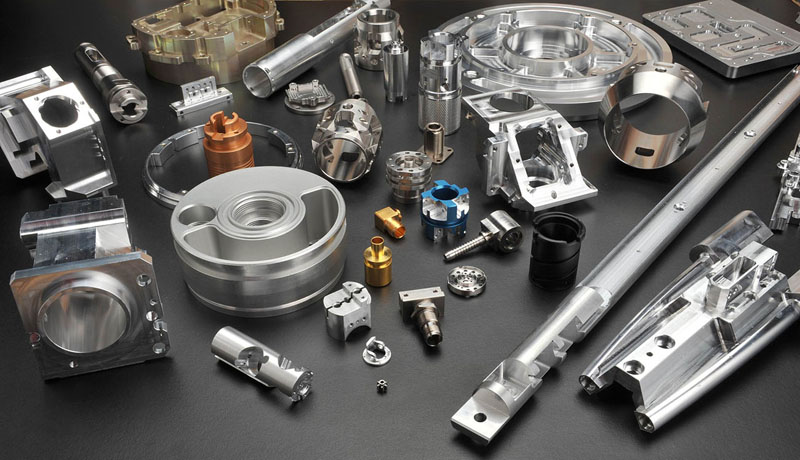The pursuit of lightweight materials is a significant trend in various industries, from aerospace and automotive to consumer electronics and medical devices. Reducing the weight of components without compromising strength or durability is a critical aspect of modern engineering and design. CNC machining, known for its precision and versatility, is widely used in processing lightweight metals to achieve the desired outcomes.
Light metals provide sturdy structures and lower weight, which is crucial for reducing weight across different industries, thereby increasing the popularity of lightweight and sturdy materials. Although these materials provide lightweight parts and components without compromising structural integrity, understanding everything about them is crucial for making informed decisions for your project.
This post explores the importance, benefits, and applications of lightweight metals in CNC machining projects.
What Is Light Metal?
Compared to the density of steel (approximately 7.8g/cm3), light metals have a higher strength to weight ratio and lower density. Magnesium, titanium, and aluminum are widely used steel substitutes with low density and significant commercial value.
Importance of Lightweight Metals
Fuel Efficiency and Performance
In the automotive and aerospace industries, reducing the weight of components directly translates to improved fuel efficiency and performance. Lighter vehicles consume less fuel and have better acceleration and handling characteristics.
Portable and Wearable Devices
In consumer electronics and medical devices, lightweight materials contribute to the portability and comfort of gadgets such as smartphones, laptops, wearables, and prosthetics.
Structural Integrity
Lightweight metals often maintain excellent strength-to-weight ratios, ensuring that the structural integrity and durability of components are not compromised despite the reduction in weight.
Common Lightweight Metals in CNC Machining
Aluminum
Properties: Lightweight, high strength-to-weight ratio, excellent corrosion resistance, good machinability.
Applications: Automotive parts, aerospace components, consumer electronics housings, medical devices.
Benefits in CNC Machining: Aluminum is easy to machine, allowing for high-speed machining processes and fine detail work. It also produces a good surface finish and can be anodized for enhanced properties.
Titanium
Properties: Extremely high strength-to-weight ratio, corrosion-resistant, biocompatible.
Applications: Aerospace components, medical implants, high-performance automotive parts.
Benefits in CNC Machining: Titanium is more challenging to machine than aluminum but offers exceptional properties for high-stress and high-temperature applications. Advanced tooling and techniques are often required to machine titanium efficiently.
Magnesium
Properties: Lightest structural metal, good strength-to-weight ratio, excellent machinability.
Applications: Automotive components, aerospace parts, electronic housings, medical devices.
Benefits in CNC Machining: Magnesium is very machinable and can be processed at high speeds. However, it is highly flammable in powder form, requiring special precautions during machining.
Beryllium
Properties: High stiffness-to-weight ratio, good thermal conductivity, non-magnetic.
Applications: Aerospace components, military applications, precision instruments.
Benefits in CNC Machining: Beryllium is highly machinable but toxic, requiring strict safety measures. It is used in applications where rigidity and thermal stability are critical.

Benefits of Using Lightweight Metals in CNC Machining
Reduced Material Costs
Despite some lightweight metals being more expensive per kilogram, the overall cost can be lower due to the reduced amount of material required for achieving the desired strength and performance.
Improved Efficiency
Lighter components improve the efficiency of mechanical systems, whether it’s an engine that needs to burn less fuel or a portable device that requires less power to operate.
Enhanced Performance
The high strength-to-weight ratio of lightweight metals ensures that components can withstand high stresses without adding significant weight, enhancing the overall performance of the final product.
Versatility in Design
CNC machining of lightweight metals allows for complex geometries and fine details, enabling innovative design solutions that are not possible with heavier or less machinable materials.
Environmental Benefits
Using lightweight metals can contribute to lower fuel consumption and emissions in transportation applications, supporting environmental sustainability goals.
Applications of Lightweight Metals in CNC Machining
Automotive Industry
Engine components, transmission parts, wheels, and structural components are often made from aluminum or magnesium to reduce the weight of vehicles, improving fuel efficiency and performance.
Aerospace Industry
Aircraft structures, engine parts, and landing gear components utilize titanium and aluminum for their strength and lightweight properties, crucial for flight efficiency and safety.
Medical Devices
Lightweight metals such as titanium are used in medical implants, surgical instruments, and prosthetics due to their biocompatibility and strength.
Consumer Electronics
Housings and structural components for smartphones, laptops, and other portable devices are often machined from lightweight metals like aluminum and magnesium to ensure durability without adding bulk.
Robotics and Automation
Components for robotic arms, frames, and precision instruments benefit from the use of lightweight metals, enabling faster and more efficient movement.
Conclusion
The use of lightweight metals in CNC machining projects is a game-changer across multiple industries, offering a combination of strength, durability, and reduced weight. The benefits of improved fuel efficiency, enhanced performance, and versatility in design make these materials highly desirable for modern engineering challenges. As CNC machining technology continues to advance, the ability to effectively work with lightweight metals will further drive innovation and efficiency in manufacturing processes.



